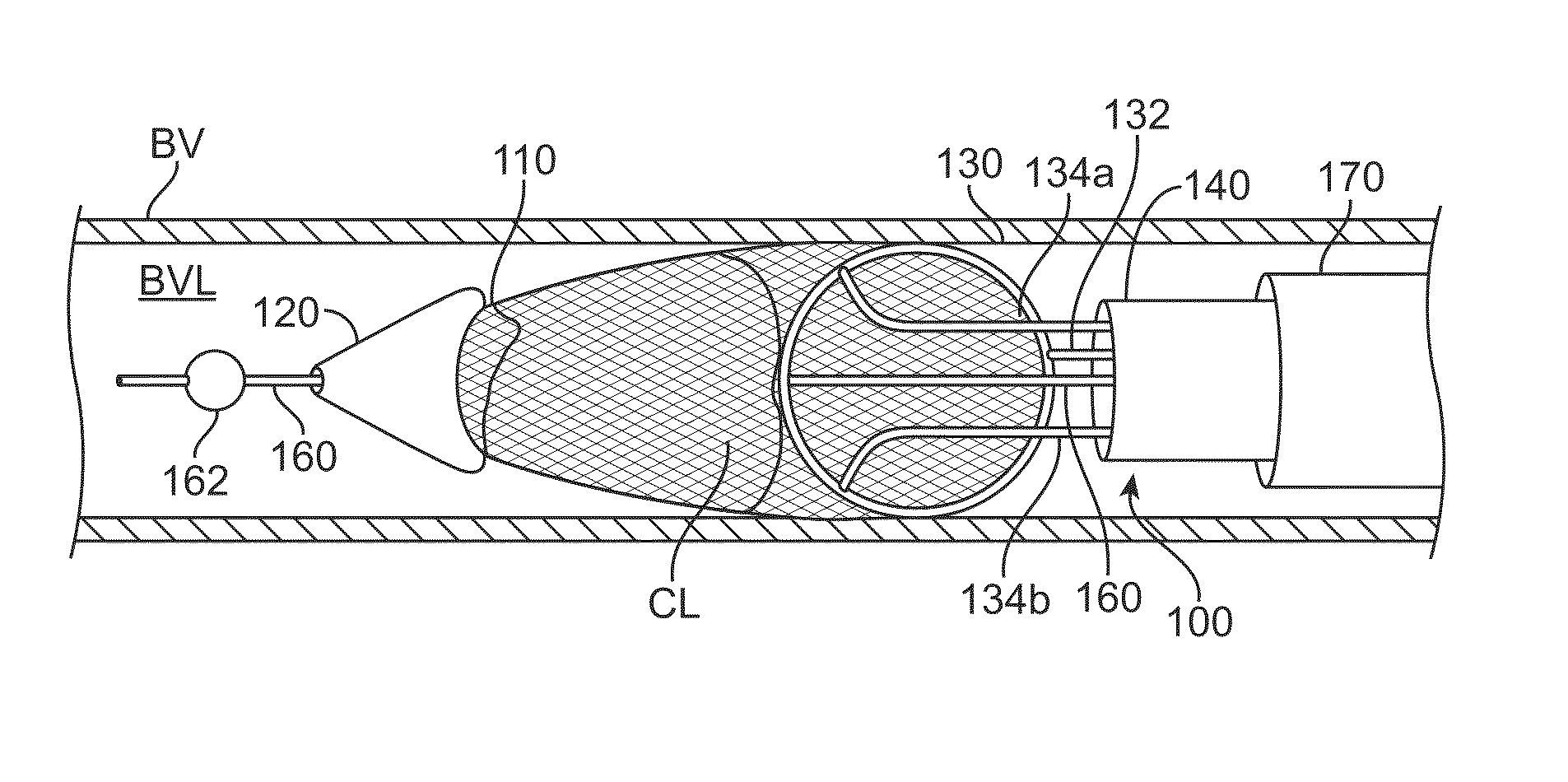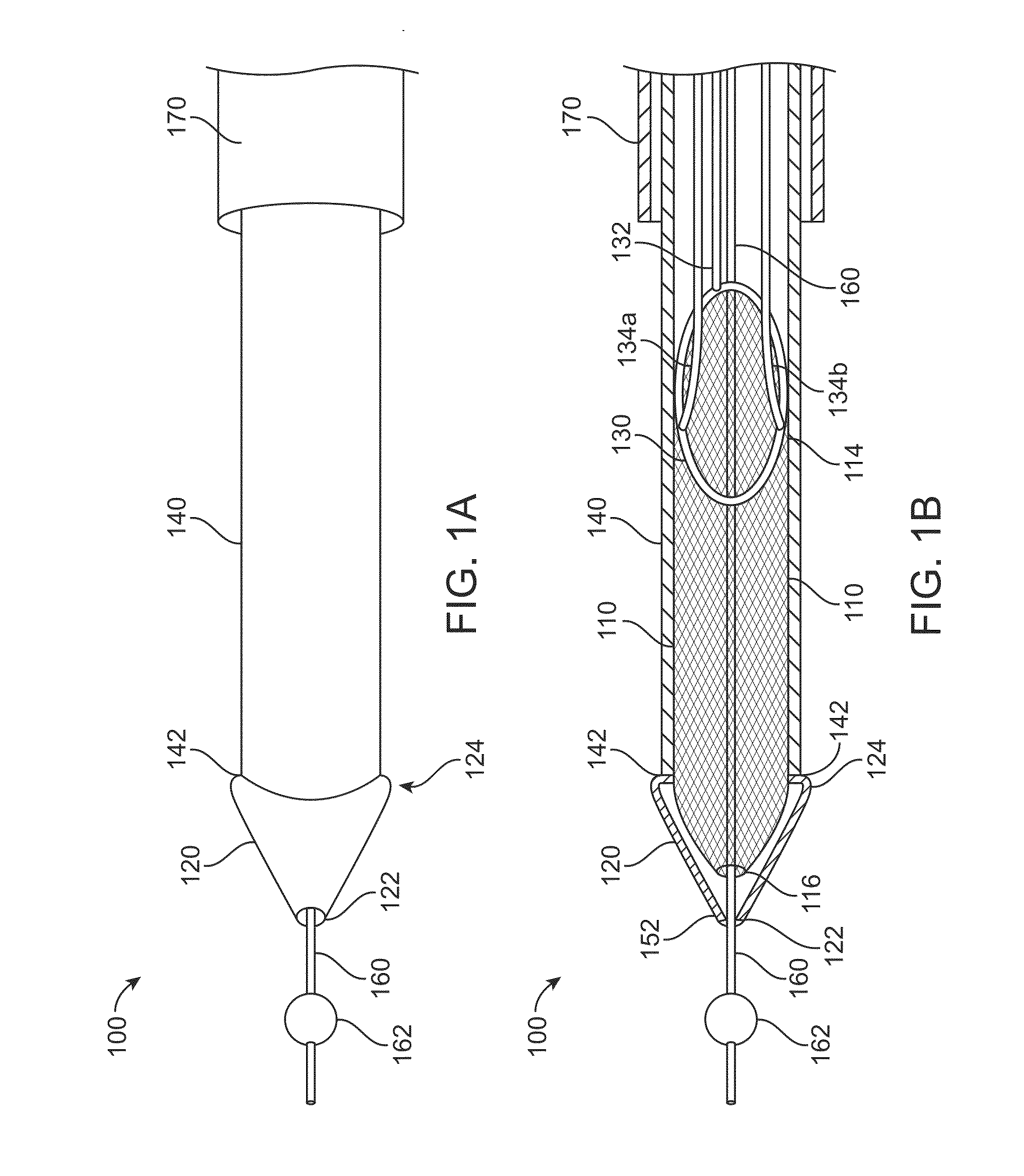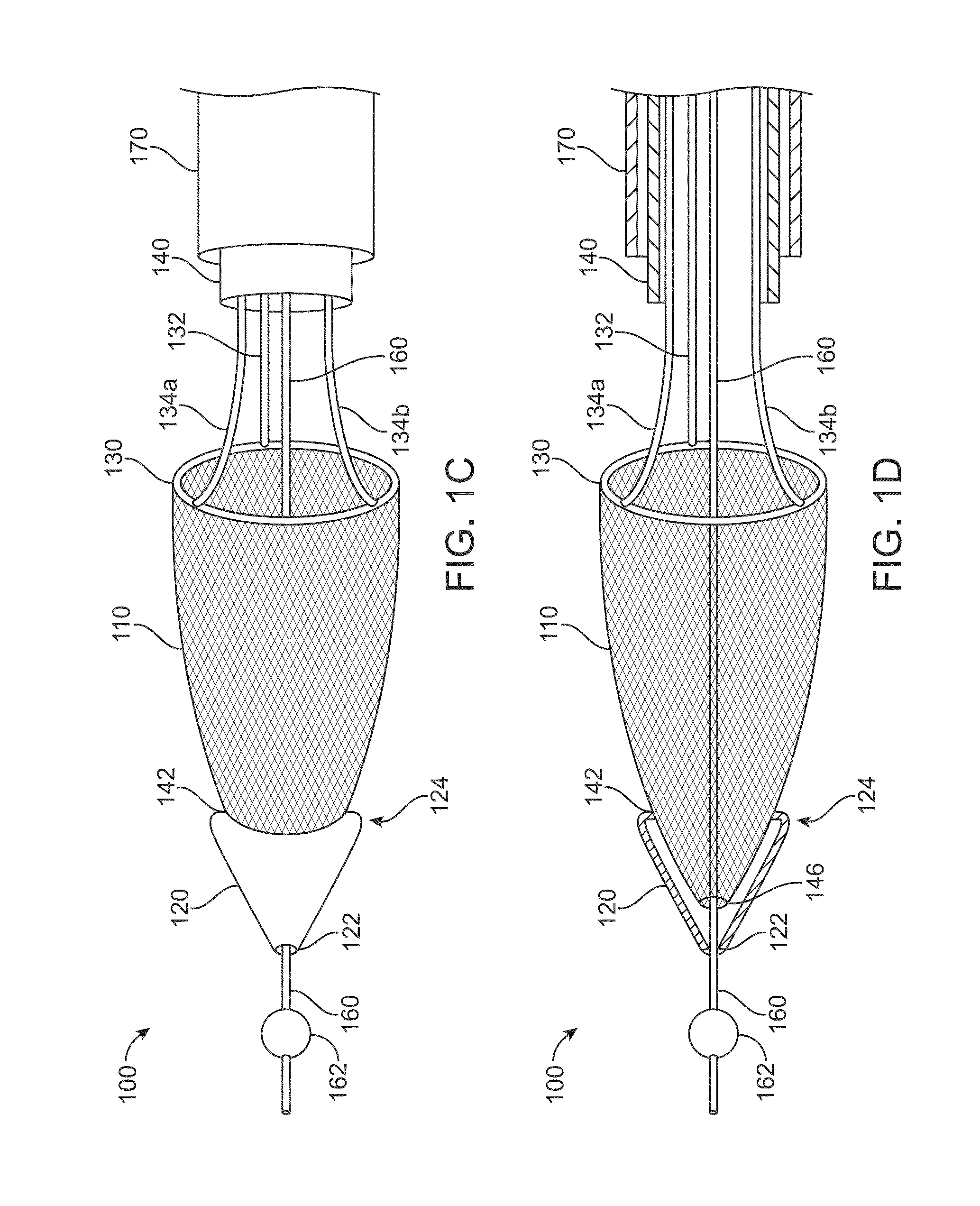Thrombus removal and intravascular distal embolic protection device
a protection device and thrombosis technology, applied in the field of medical devices, systems and methods, can solve the problems of insufficient “warm” and blood clots or emboli to the pulmonary arteries of the lung, potentially life-threatening conditions, brain, etc., and achieve the effect of facilitating the retraction of tubular mesh and/or inner sheath, and facilitating the advancement of the clot extraction catheter
- Summary
- Abstract
- Description
- Claims
- Application Information
AI Technical Summary
Benefits of technology
Problems solved by technology
Method used
Image
Examples
Embodiment Construction
[0054]FIGS. 1A to 1D show a clot extraction catheter 100 according to many embodiments. FIGS. 1A and 1B show the clot extraction catheter 100 with its tubular mesh or clot capture basket 110 in a constrained, delivery configuration. The tubular mesh or clot capture basket 110 may be self-expanding and may comprise a shape-memory material or metal such as Nitinol (NiTi). The clot extraction catheter 100 comprises a tubular inner sheath 140 which is advancable over the tubular mesh 110 to constrain the tubular mesh 110. The tubular inner sheath 140 can be retracted proximally to release the tubular mesh 110 as shown in FIGS. 1C and 1D. When unconstrained, the tubular mesh 110 may resiliently assume its unconstrained configuration which may be in the form of a tube sock-like structure. Alternatively or in combination, the tubular mesh 110 may comprise a heat-based shape memory material so that the unconstrained tubular mesh 110 may assume the tube sock-like structure when exposed to bo...
PUM
 Login to View More
Login to View More Abstract
Description
Claims
Application Information
 Login to View More
Login to View More - R&D
- Intellectual Property
- Life Sciences
- Materials
- Tech Scout
- Unparalleled Data Quality
- Higher Quality Content
- 60% Fewer Hallucinations
Browse by: Latest US Patents, China's latest patents, Technical Efficacy Thesaurus, Application Domain, Technology Topic, Popular Technical Reports.
© 2025 PatSnap. All rights reserved.Legal|Privacy policy|Modern Slavery Act Transparency Statement|Sitemap|About US| Contact US: help@patsnap.com



